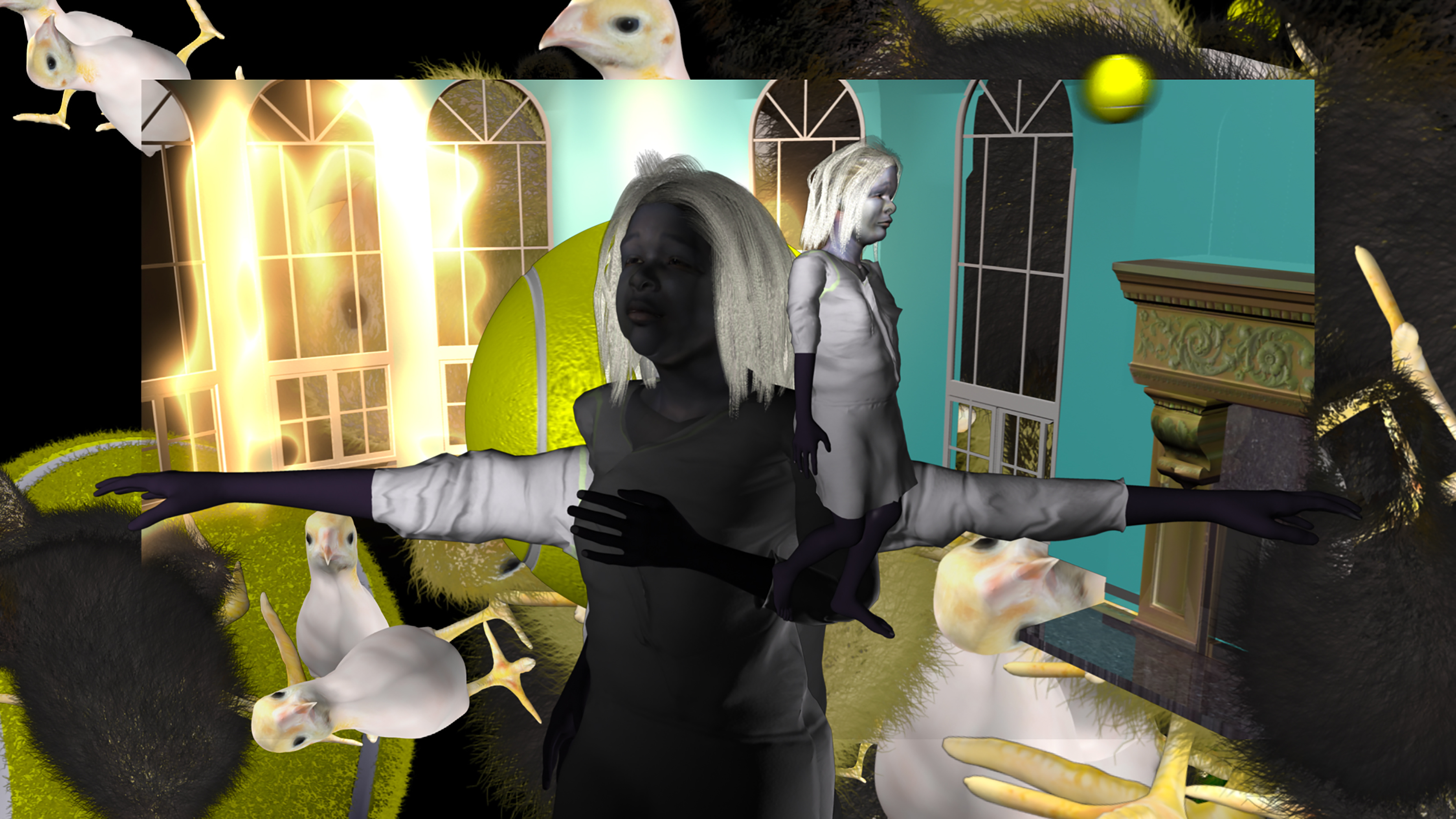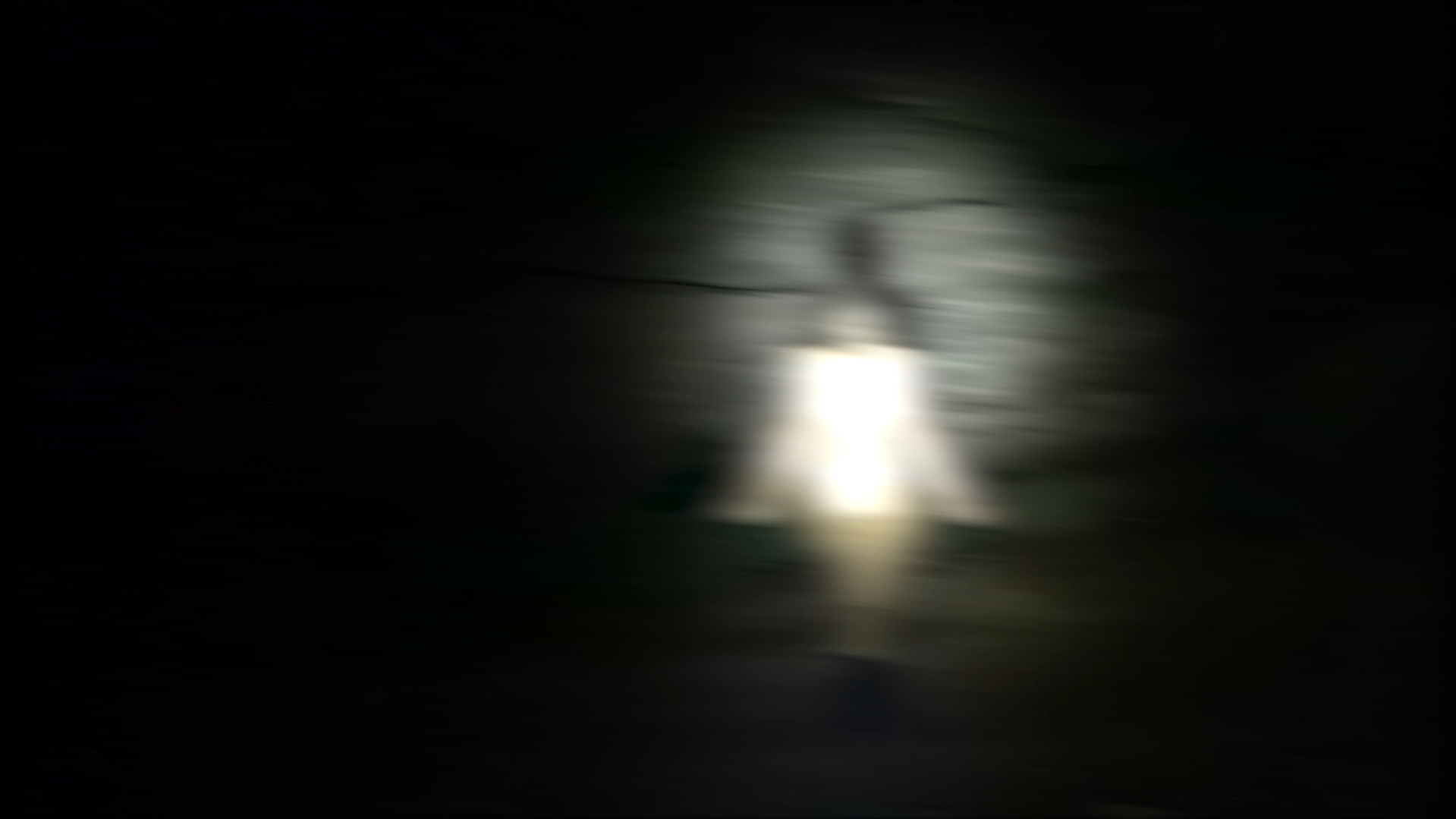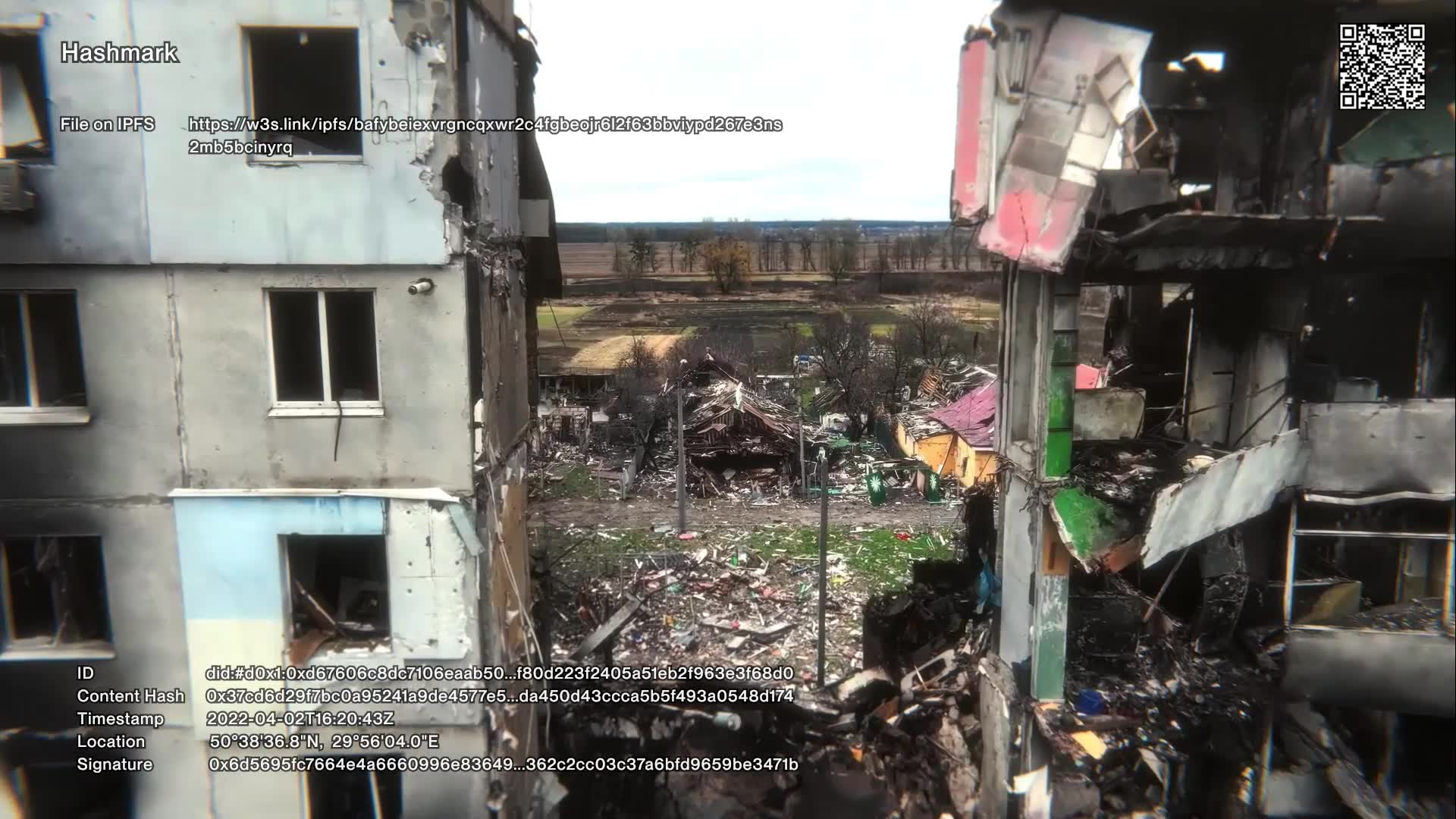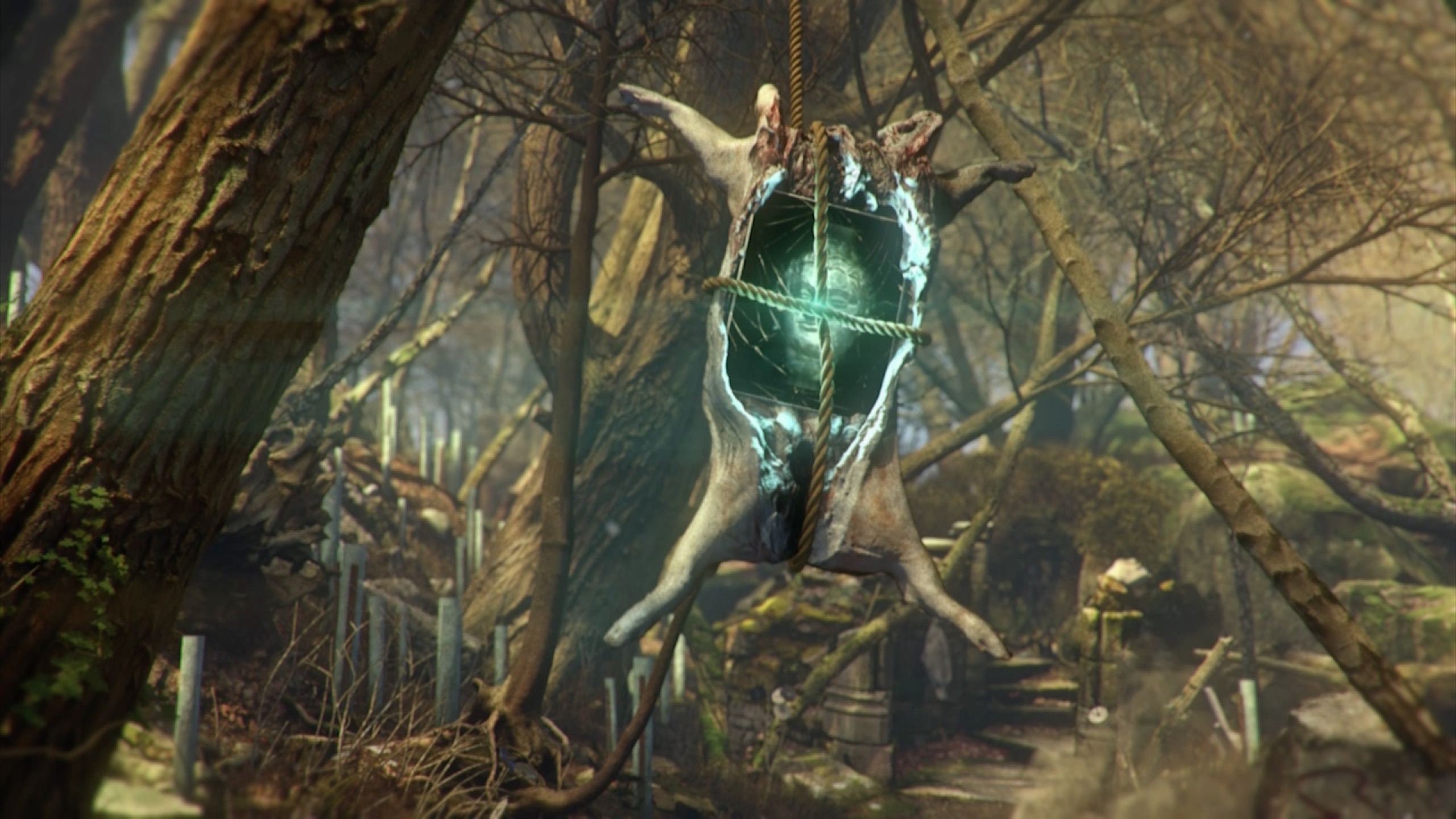
Ryan Trecartin
Item Falls
- 2013Ryan Trecartin
Item Falls, 2013
HD Video, color, sound
25:44 min
© Ryan Trecartin, 2024
Courtesy Sprüth Magers and Morán Morán

In 'Item Falls', we are peaking. We start out at a casting call, but before long we're firmly in the grip of hallucination, shedding our anxieties and evidently regressing to the animation era, a time when stunt chickens were mere chicklets. Friendly archetypes float in and out of what seems like our bedroom. The red-headed Jenny has returned, but this time she's squeaky and trusting. Unlike in Center Jenny, here our perspective is literally centered. The camera seems to be the in middle of the room, which is good, because we're too blissed out to move. Luckily, our hallucinations look directly at us.
The driving force of our trip is a producer named TK (played by Allison Powell) who seems to be coordinating auditions, which enable going from first-level basic to second-level stupid to level-center. An Adele-like figure pops in from time to time--or is she the good witch of the north? As the film progresses, the producer shows off a boy band she has purchased, and mostly they seem really gay.
Since we're having a peak experience, the big questions show up. Do we have free will? Is what we're seeing real? What does it mean to be normal? "This is not a real chair," we're admonished at one point, "We animated it. It's not really here." Nothing quite makes sense, but it doesn't matter. "One of the most significant things about my stunt chickens is that I deserve a solo," says Jenny, who continues to muse about clubs and applications, but without the fear and regret that fuels Center Jenny.
Jenny makes various attempts at logical argumentation but gets distracted by her own words. "Some of my friends believe that I should be an eagle," she asserts. "I believe that I'm grounded and that I should stay on the ground with the chicken, because chickens used to be dinosaurs. And it's a fact. One of the most elegant things about fact is that I believe in them." Her logical leaps take on a sharper edge when discussing her family. "My parents ran one of the last print magazines... I was very generous to acknowledge the things that they did. It was a very common decision to make now. I fired them." As with the rest of Priority Innfield, worries about the past and previous generations get tangled up in violent delusions. Later, a boy-band member is disturbed to notice his own armpit hair. "Oh no! Look at my armpit hair. Hence my airs, hence my synonym, hence my vibe, hence my arm!" The logical chain becomes a sort of failed genealogy. To the extent that boy-band functions as a discrete gender, the speaker appears to be worried about becoming a man.
-- Chris Glazek
Credits, Special Thanks - In order of appearance: Alphabetical Stunt Chicken Items: Butters, Carmen, Castor, Cooter, Daisy, Guilda, Jordan, Lobo, Mamba, Pollux. British Stunt Voice Over: Telfar Clemens. Stunt Director Voice Over: Ryan Trecartin. Basic Animated Concept Babe: Jackie Mason, Nina Bierlein. Significant Grey Animated Chicken Jock: Ryan Trecartin. Significant Dirt on Bird Man Animation: Dell Trecartin. Significant Blue Animation with Birds: Murphy Maxwell. Audition Rental: Anna Vindel, Allichia Ornelas, Danny Sanchez. Significant Red Animation with Meow: Murphy Maxwell. Witness (Camera On) Audition Bitches: Lizzie Fitch. Witness (Camera On) Rentals: Lola Sinreich. Witness (Audition Slut) Game On. Significantly Animated Human Country Chick Arrangements: Annie Pearlman, Brian Bellot. Other Animations Studio. Most Significant Animations Yet: Lindsay Beebe. Guided Experimental Stunt Scaleability: Alison K Powell. Might Have Money On My Head and My Head On Money Might-Interactive Anatoon Management. Camera On Essential Behavior Spots, Relatively Significant Boy Band Textures: Drew Miller. The Most Significant Cat Animation to Date: Percy. Most Realistically Endangered, Animated Bold Spot Boy Band Textures, Since Significant Gravity Solves: Murphy Maxwell. The Fun Most Best Favorite Realistic Armpit Hair Yet: Drew Miller. A Significant Animated Boy Band Bitch: Holcombe Waller. Chicken Continuity Manager, Audition Expert: Alison K. Powell. Elegant Audition Chick Line Item: Rachel Lord. Significant Fools Fed Motion Graphics-Free Will. Two Baby Stunt Chickens At;Cousin a Carpenter;Real Animated Police Audio. Stillladder: Rachel Lord, Alison K Powell, Holcombe Waller, Murphey Maxwell, Drew Miller. Next Normal Shit, Boy Manager Band Behavior: Matthew Lawton. Ugly Normal Animation Hat: Seth Bogart. Breakaway Basic Boy Bnds, Human Musical: Tierney Finstar. The Most Significant Yellow Animation Yet: Murphy Maxwell. Division Blonde, Watch Animation Yet: Lizzie Fitch. Animation Comments: Chris Moukarbel. On This Level Yet: Kevin Mcgarry. The Most Significant Unity Prep Yet, Each Animation Normalizes Significant Points: Bo Barnes, Jesse St. John, Frank Fernandez, Seth Gottesdiener. Boy for the Band Yet. Realistic Animation Steps, Storytelling Boy Bands, Adopt Survive Breakaway: Oliver Daly, Luke Gilford. Significant Lovers Watch: Colin Self. World Tour Reincarnation Techniques: Lain Kay. Significant Basic Horse Animation Standard: NALA. Realistically textured Audition Chick: Annakim Violette 1st level, Jillian Alexander 2nd level. Animation Timing:Renee Plaza. Stunt Chicken Breakaways: Allichia Ornelas, Anna Vindel, Danny Sanchez. Basic Sorority Audition Troll: Shailaun Manning. Safe Space: Rachel Lord. 3D Animation: Rhett LaRue. Dedicated to our significant cat PERCY.
The practice of Ryan Trecartin (*1981) is a multimedia and multivalent system of film, sculpture, and installation. Heralded by critic Peter Schjeldahl as “the most consequential artist to have emerged since the nineteen-eighties,” Trecartin has invented new languages of contemporary expression and self-actualization through his use of editing, sound design, and collaborative performance, often utilized at once and with equal intensity. The artist is currently based in Athens, Ohio.
Trecartin studied Film, Animation and Video at RISD at a time of immense change in access and ability in moving images. With his undergraduate thesis film, 'A Family Finds Entertainment' (2004), Trecartin established himself as one of the foremost innovators of the medium, encapsulating the ever-evolving relationship between humans as mediated by social groups, technology, and self-expression.
The primary mode of Trecartin’s practice is, arguably, language. In his tightly scripted films, the artist often examines the social and cultural weight of words and dialogue, expressed in forms both anarchic and totalitarian. Verbal shibboleths abound, marking characters as in or out of various taxonomic groups, and with many characters ultimately either subsuming themselves into a larger social whole or carving out new linguistic areas of self-definition. In movies such as 'K-CoreaINC.K (section a)' (2009) and 'CENTER JENNY' (2013), language is used as a source of conformity: characters are drilled in corporate or pedagogical verbiage, with stock phrases and jargon repeated over and over again. But even within the strict societal rules of Trecartin’s videoscapes, the glimmers of differentiation win out.
What strikes one most upon first viewing Trecartin’s movies is the synesthetic quality of the artist’s editing. The gestures of the camera are highlighted through the use of foley and sound design to create the sense of a living and breathing apparatus, a character or force in its own right. The editing speaks, talking back to the characters, manipulating situations, and changing outcomes. The editing acts as a double to the language of the narrative, establishing an intricate vernacular of movement and sound.
Trecartin’s films are populated by a singular crew of characters, many of them played by Trecartin himself. Through the use of wigs, outfits, and face paint, they transgress boundaries of gender, sexuality, and self constantly. This freedom allows each role to examine more distinct concepts of characterization. When gender, sex, and other forms of identity are as easy to take on and off as costumes, definitions of selfhood become simultaneously fraught and ecstatic. An eagerness to define and disrupt permeates the screen.
Trecartin focuses intently on collaboration. The films are shot on meticulously crafted mise en scène which function as both film sets and creative platforms for the artist’s varied collaborators. Most prominently among these is Trecartin’s frequent artistic partner Lizzie Fitch. Their work together has evolved into the creation of “sculptural theaters” for many of the works, environments in which the physicality of the movies is extrapolated to an even further degree.
Part of the high school class of 2000, Trecartin’s practice has deftly mirrored the societal shifts of his own millennial generation. In 'Junior War' (2013) we find a teenaged Trecartin behind the camera, capturing his high school peers’ initial hesitancy of being filmed develop into a preening performance of youth. While works of the late aughts such as Trill-ogy Comp (2009) find the warring intersection between the wonder of new forms of entertainment, such as reality TV, and the bleak corporate reality during The Great Recession, later works such as Temple Time (2016) and 'Whether Line' (2019–ongoing) interrogate narratives of self-preservation through class identification, ownership, and the concept of “settling down.” Though often hyper-specific, these thematic arcs fit vitally into contemporary histories, providing a radically queer lens through which to examine American societal evolution within the 21st century.
Digital Series #1
CON GRAZIA
- Alex Murray
- Nicholas Korody
- Emma Charles
- Hashdox / Egor Kraft
- Jacob Hurwitz-Goodman
- Do Not Research
- Dana Dawud
- Jacob Broms Engblom
- Miglė Vyčinaitė
- New Scenario
- Rustan Söderling
- Alex Declino

Mediations; the infrastructure of our digital existence, the pervasive reach of surveillance, the fluidity of online identity, and the boundless possibilities of world-building. Each pixel, line of code, and digital construct serves as both canvas and commentary. The virtual bleeds seamlessly into the real, illuminating the myriad ways in which technology shapes, distorts, and enriches our lives.
Throughout our platform, we feature a rotating selection of works from artists at various stages of their careers, each bringing a unique perspective to the digital conversation. Despite their diverse methods and expressions, these artists share a common goal: to transcend traditional art world structures and engage audiences on new, digital terms. Each segment begins with a contribution from a theorist or platform that has significantly influenced the discourse around the theme, setting the stage for the artistic explorations that follow. These introductions, whether in the form of talks, readings, or essays, are not just preludes; they are integral parts of the narrative we weave. They provide context, provoke thought, and invite critical engagement. By integrating these contributions into our web interface, we ensure that each segment is both engaging and accessible, creating a rich, ongoing archive that serves as a resource for future exploration.
A journey through the digital—a slice of binary space where the boundaries of the real are constantly being redrawn, and where every work is an invitation to see the digital realm anew. As you navigate our platform, we hope you find it a space for both discovery and reflection. Here, art and technology converge, illuminating the complexities of our interconnected world.
This project is made possible with the support of the Swedish Art Council.







